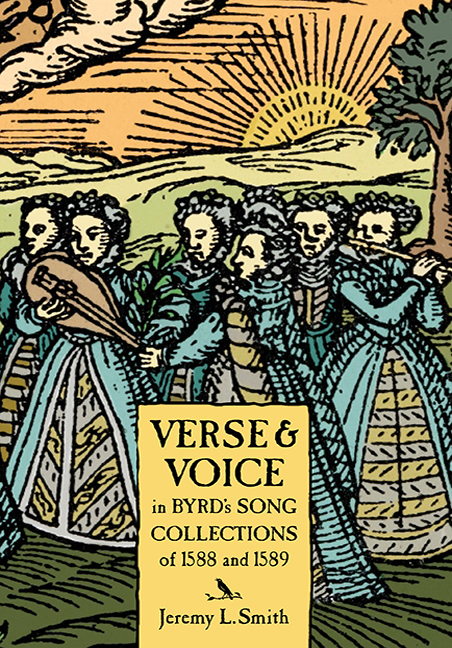Book contents
- Frontmatter
- Contents
- List of Figures
- List of Music Examples
- Preface and Acknowledgements
- Editorial Conventions
- Introduction
- CHAPTER 1 Psalmes
- CHAPTER 2 Sonets & Pastoralls, I
- CHAPTER 3 Sonets & Pastoralls, II
- CHAPTER 4 Sonets & Pastoralls, III
- CHAPTER 5 Songs of sadnes and pietie
- CHAPTER 6 Songs of Three Parts
- CHAPTER 7 Songs of Four Parts
- CHAPTER 8 Songs of Five Parts
- CHAPTER 9 Songs of Six Parts
- Conclusion
- Select Bibliography
- Index
- Studies in Medieval and Renaissance Music
Introduction
Published online by Cambridge University Press: 05 July 2016
- Frontmatter
- Contents
- List of Figures
- List of Music Examples
- Preface and Acknowledgements
- Editorial Conventions
- Introduction
- CHAPTER 1 Psalmes
- CHAPTER 2 Sonets & Pastoralls, I
- CHAPTER 3 Sonets & Pastoralls, II
- CHAPTER 4 Sonets & Pastoralls, III
- CHAPTER 5 Songs of sadnes and pietie
- CHAPTER 6 Songs of Three Parts
- CHAPTER 7 Songs of Four Parts
- CHAPTER 8 Songs of Five Parts
- CHAPTER 9 Songs of Six Parts
- Conclusion
- Select Bibliography
- Index
- Studies in Medieval and Renaissance Music
Summary
IN 1588, the year of England's triumph over the formidable Spanish Armada, a Catholic composer, William Byrd (c. 1540–1623) – the leading figure in the Queen's Protestant chapel – brought out a collection of thirty-five songs he entitled Psalmes, Sonets, & songs (BE 12). Within the next three years he would also publish, along with two impressive sets of Latin-texted motets, an additional forty-seven numbered English-texted Songs of sundrie natures (BE 13) (see Figs. 1 and 2). Byrd was not the first Elizabethan composer to venture into print with a set of songs. Thomas Whythorne published his Songes for Three, Fower, and Five voyces in 1571. Furthermore, by 1588, Byrd, with his illustrious fellow gentleman of the Chapel Royal, Thomas Tallis, had already produced a grand set of Latin-texted works in their joint Cantiones … sacrae (of 1575), a volume wherein the two composers announced a patent for music printing (along with printed ruled music paper and music importation) Elizabeth awarded to them that year. By the late 1580s, then, Byrd had long ago placed his works on the same bookstalls where his countrymen had already encountered music with English texts. But Byrd's first printed songs still marked a significant moment in the transition from manuscript culture to an ever-increasing role for print in the era's musico-poetic world.
Having served in the Queen's chapel from 1572 onward, in one capacity or another, Byrd was in close enough contact with other members of the court to obtain the works of its most famous literary figures, including Sir Walter Ralegh, Edward de Vere, the seventeenth Earl of Oxford, Sir Edward Dyer, and, most prominently, Sir Philip Sidney, almost none of whose “courtier poems” had been published before Byrd brought them into print in his musical settings (see Fig. 3). Scholars have often remarked in passing that Byrd's songs were likely to have been courtly in nature at this stage of his career. His published sets offer us, in fact, a rare glimpse into the interdisciplinary activities of some of the era's finest poets and musicians serving the Queen.
- Type
- Chapter
- Information
- Publisher: Boydell & BrewerPrint publication year: 2016

